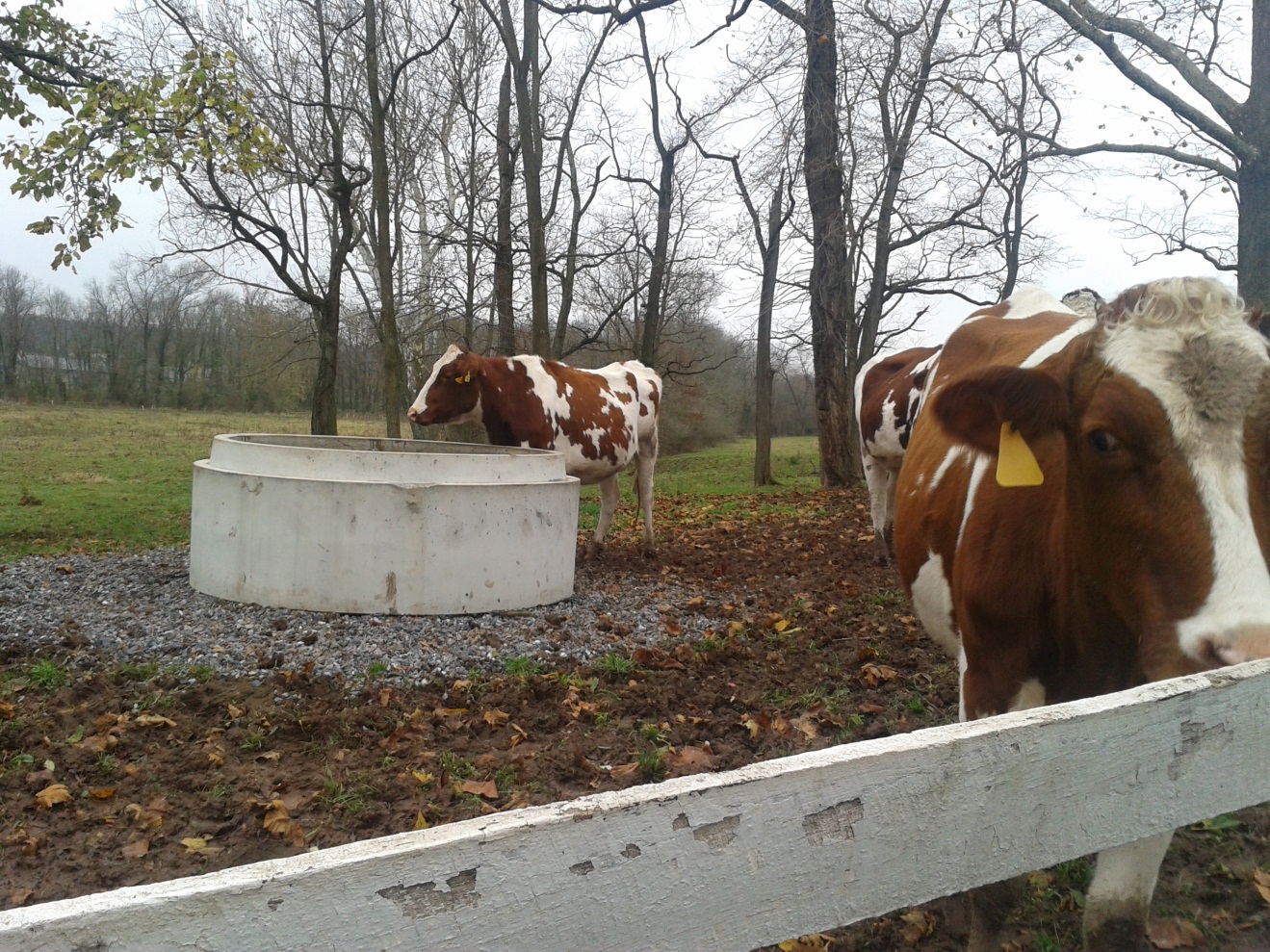Allowing livestock access to streams flowing through the farm can have detrimental effects to the stream, as well as to herd health. As the livestock climb in and out of the stream they damage the bank by ripping out vegetation that holds soil in place. They can also add harmful bacteria to the water, negatively impacting downstream neighbors. The bacteria can also affect herd health. Eliminating or minimizing access that livestock have to the stream can improve water quality.
Fences can be installed parallel to the stream to restrict cow access. Fencing should be placed at minimum 12 feet from the top of the stream bank in order to fully increase bank stabilization. Shortly after fencing out the livestock, vegetation will become established on and around the stream banks, reducing erosion, creating better wildlife and stream habitat. The bacterial input to the stream will also be drastically reduced since the livestock will no longer be able to defecate directly in the water.
Stream Crossings
Eliminating total access to the stream is the best scenario, however it is understood that certain circumstances require the livestock to cross the stream. Stabilized stream crossings can be constructed for this reason. The crossings must be designed to protect the stream from erosion and keep livestock moving from one side to the other. A DEP permit must be obtained before a stream crossing can be built.
Alternative Water Sources
Off stream water sources, such as water troughs and pasture pumps, can be established where livestock access to streams is eliminated through fencing. Alternatively, stabilized water access areas can be constructed to allow livestock stream access for watering with minimal impact.
Programs
USDA NRCS
USDA NRCS administers a variety of cost share programs to implement conservation practices such as stream bank fencing. The Conewago is USDA’s “Showcase Watershed” meaning the watershed is targeted for resources and funding.
319 Funding
Farms in priority areas of the watershed may also be eligible for funding through the County Conservation Districts’ 319 funding.
Conservation Reserve Enhancement Program (CREP)
CREP provides funding to plant forest riparian buffers on agricultural land. Stream bank fencing, crossings and alternative watering sources can also be funded through this program.
Web Resources
Benefits of Stream Bank Fencing
Contacts
Heather Grove, USDA NRCS
(717) 874-2530, heather.grove@pa.usda.gov
Jacob Chapman, DCCD
(717) 921-8100, jchapman@dauphinc.org
Ashley Spotts, CBF (CREP Program)
(717) 234-5550, aspotts@cbf.org

